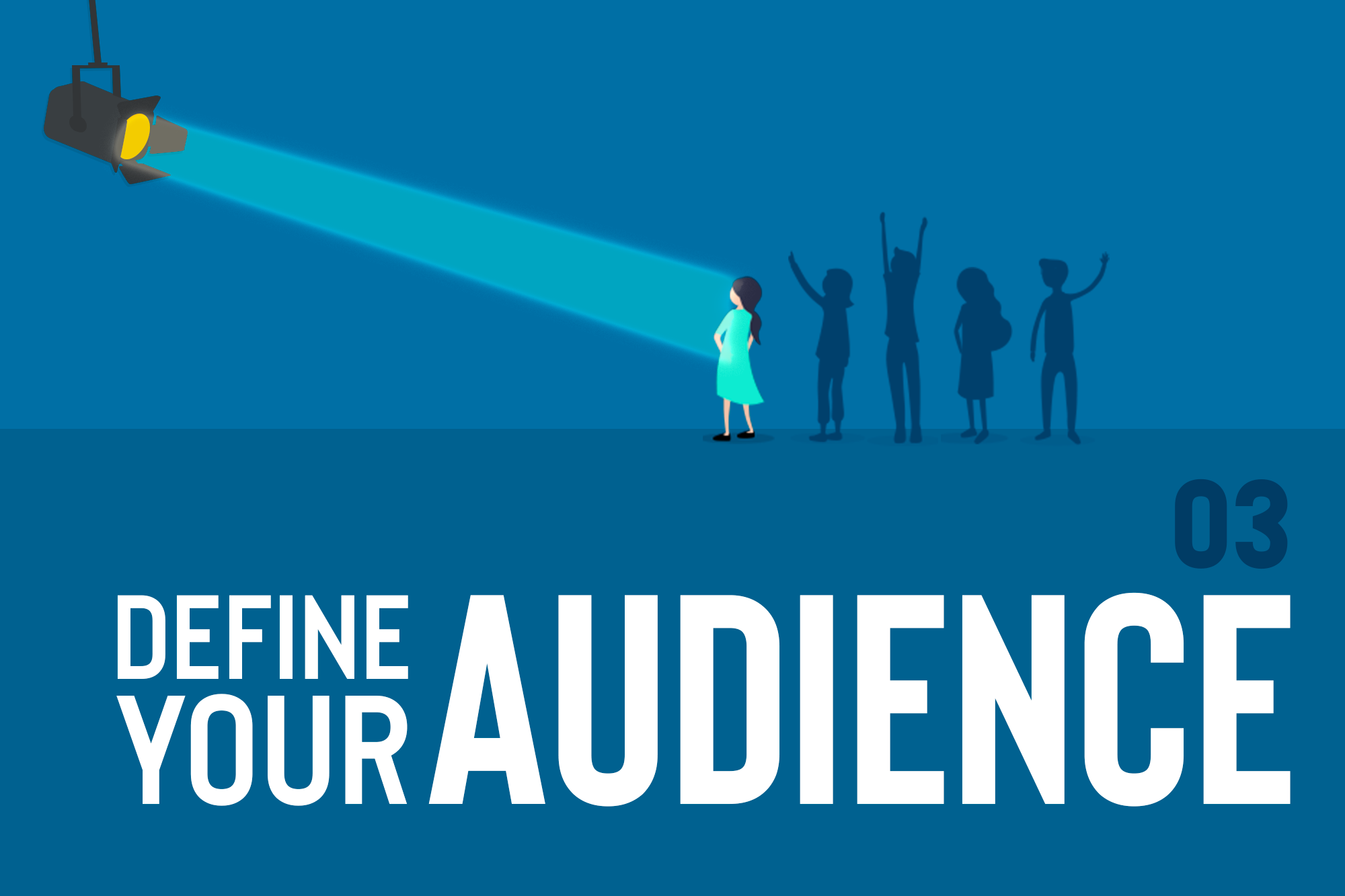Once you’ve established what you’re going to be creating, the next step is to establish who you’re going to be selling to; after all, it’s a lot easier to create successful products if you have a good idea of who will be buying them, and what they want!
"What brings me inspiration and pleasure is that I can work and create to my own schedule, communicate with talented colleagues and customers, choose themes, techniques and styles for my collections and be the author and director of my own projects. I can accidentally find my illustration inspiration in a bookstore, or even on a box of tea. I've made digital products my main source of income - it allows me to travel and have my lovely work always with me!"
Leading designer of illustrated products and patterns

The Good News
The good news is, if you followed the advice in our previous article on talent, you’ll be looking to create products within your main field of interest. This just happens to be the same field your audience is interested in - which means it’s very likely you’ll be able to come up with an accurate picture of who they are pretty quickly!
The Benefits Of Establishing Your Audience
-
Product Focus
You’re more likely to create targeted/focused products that they’ll want to buy.
-
Easier Marketing
It’ll be easier for you to create marketing material (such as covers and previews) which resonate with them, which will help you sell this and future products.
-
Build Your Own Community
You’re more likely to successfully build your own community to market to if you understand them and ‘speak their language’.
-
Increase Sales
If you know what their problems are, you can create products which solve them, which are far more likely to sell.

Key Takeaway
Try to answer the following questions: Who am I selling to? What problems do they have that I can solve with my products?
If you’re working within your field of interest, you’ll be selling to like-minded people who are likely to have similar needs and interests to your own. They are also likely to have similar problems to the ones you have encountered, a little research into the main products in your field, reading reviews, visiting blogs and forums should help establish this.
How Do I Define My Audience?
Following are some simple questions which will help you get to know them better:
-
Are they male, female or both?
-
What’s their age?
-
Where are they located?
-
What’s their job?
Or what is their main design interest?
-
Who is their audience?
Who do they create design work for?
-
What do they care deeply about?
E.g. quality design, saving time, saving money.
-
What resonates with them?
In terms of language, design and popular products.
-
What Are Thier Problems?
Do they have problems which you might solve with your products?
Research
To answer your questions we recommend the following research:
-
Browse Lots Of Products
Visit marketplaces and browse products within your field to read their reviews and comments. What do people love about them? What do people hate about them?
-
Study The Best Product Creators In Your Field
Establish who the most popular product creators are in your main field (go to your targeted product category in our marketplace and browse by 'popular' see the author links under the products). Then visit their store’s and websites to find out more about them and their products. Follow them on social media to get a feel for what they are creating and see if there are any gaps in the market that they’re not exploiting.
-
Visit blogs, forums, listen to podcasts...
See if there are any regular or popular topics where people are saying things like ‘I’d love to be able to’ - ‘wouldn’t it be great if’...
Example Audience Definition Research
A great example of a product targeting a wide audience to maximise sales is The Comprehensive Paper Craft Collection, by the hugely talented Artifex Forge. Watch the great video showing the product in detail, then see our example breakdown of them and their potential audience as a guide for how it's done:
The Designer - Artifex Forge
- Supplies design resources for Illustrator, Photoshop & Affinity
- Leading designer with many top selling products with positive reviews and amazing feedback
- Innovative products with very polished, engaging presentation
- Website: https://artifexforge.com/
- Instagram: https://www.instagram.com/theartifexforge/
- Facebook: https://www.facebook.com/ArtifexForge/
- Twitter: https://twitter.com/ArtifexForge
Target Audience
- Gender:
Male or female - Age:
No specific target age - Located:
Globally - Job:
Amateur/professional designers and crafters - Who do they create design work for:
- Print (book covers, birthday cards, greetings cards, posters, fabrics etc)
- Websites (web banners, themes etc)
- Friends and family (birthday cards, christening cards etc)
- What do they care deeply about?
- Authenticity
- Creativity
- Hand-made details
- Large size of the product
- Saving design time
- Ease of use
- What resonates with them?
- Quality design
- Vibrant and engaging presentation
- Comprehensive products
- Innovative and creative products
- What problems do they have which you might solve with your products?
- How do you easily and quickly create 'hand drawn' effects and a 'crafted' feel?
- How do you create vibrant designs without hours of drawing elements or cutting them out by hand?
- How do you quickly design fun to greetings cards, book covers etc?
How Do I Use My Audience Definition?
Use it every time you:
-
Create A New Product
Make sure your new product solves problems that your audience has and that they'll find it as useful as possible.
-
Make Marketing Materials
Ensure the language you use will resonate with your audience - let them know you're one them. If you can connect with them, you're far more likely to sell them your products.
-
Release Community Content
Make sure that the content your release to them is something they would find useful, interesting and informative. This will maximise your chances of growing your own community which you can then market to.
Always ask yourself: is your product likely to engage with them based on what you know about them? If the answer is no, then refocus - make sure that everything you do puts your audience first.
A Few Ways To Focus Your Work To Your Audience
-
Solve Problems
Create products that solve problems you know they have.
-
Excite And Delight
Create products that you know will excite and delight them. If they love working in the same field you should have a good idea of what they might be.
-
Resonate
Use language and terminology that you know will resonate with them.

Define Your Audience Action List
Work through the following points and make notes in a Google doc or similar to use later.
- Use the audience definition questions.
- Research products and product creators in your target category and aesthetic.
- Visiting blogs, forums, podcasts etc to see if there are topics which give you insight into your audience and the problems they have.

About The Author
Matt Slightam is Co-founder and creative director at Design Cuts. He's creatively directed some of the biggest digital design products on the market - working with many leading designers such as Shoutbam, Trailhead, Latino Type, Pretty Little Lines, ROHH, Julia Dreams and many more.
Matt puts out regular useful content to help designers via Instagram, and can be found at @mattslightam



Be the first to comment